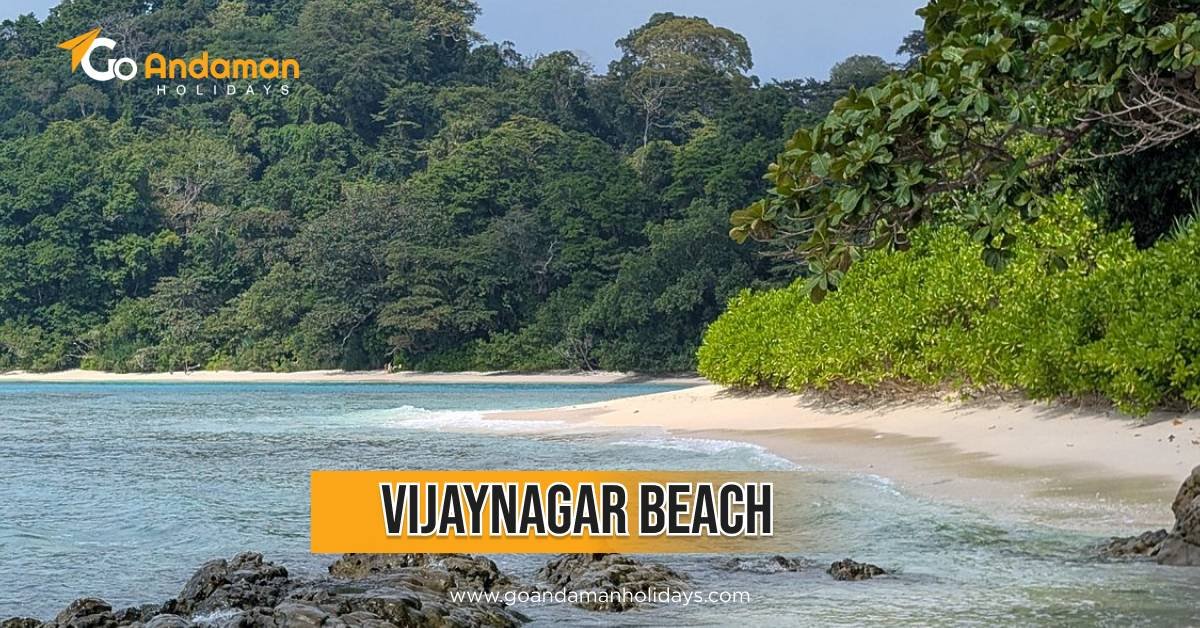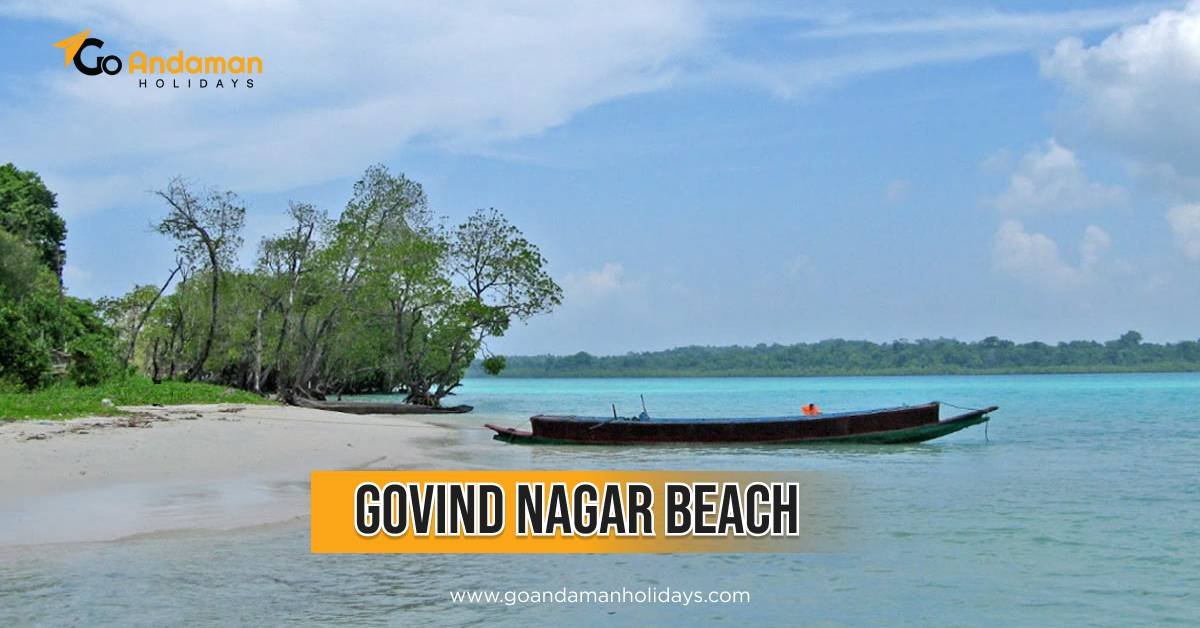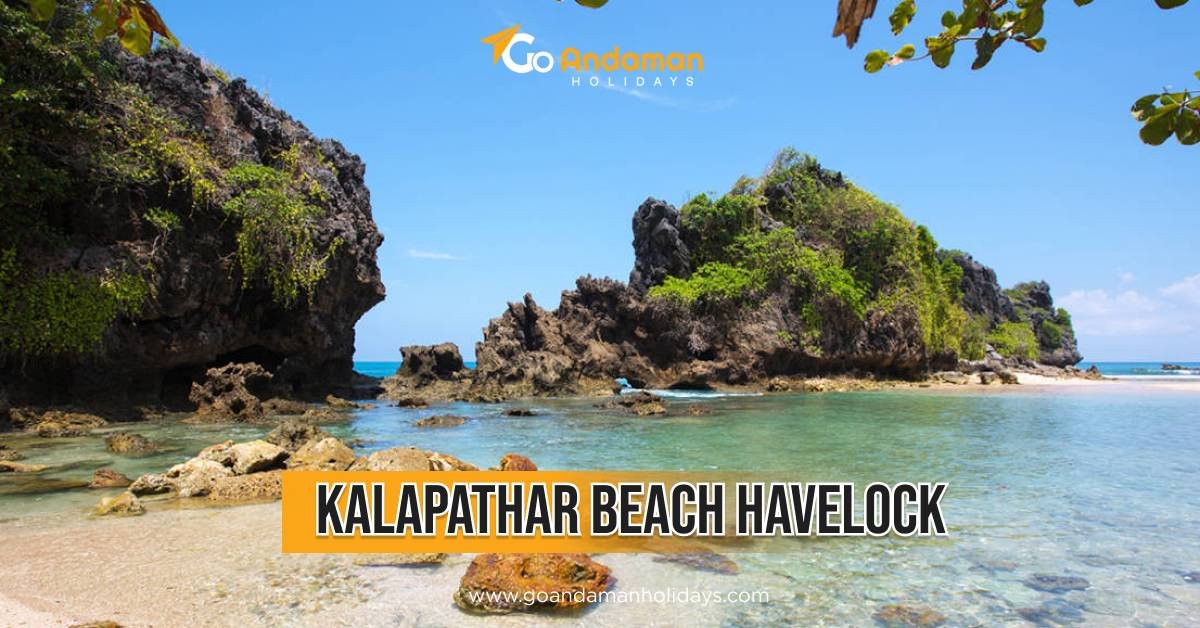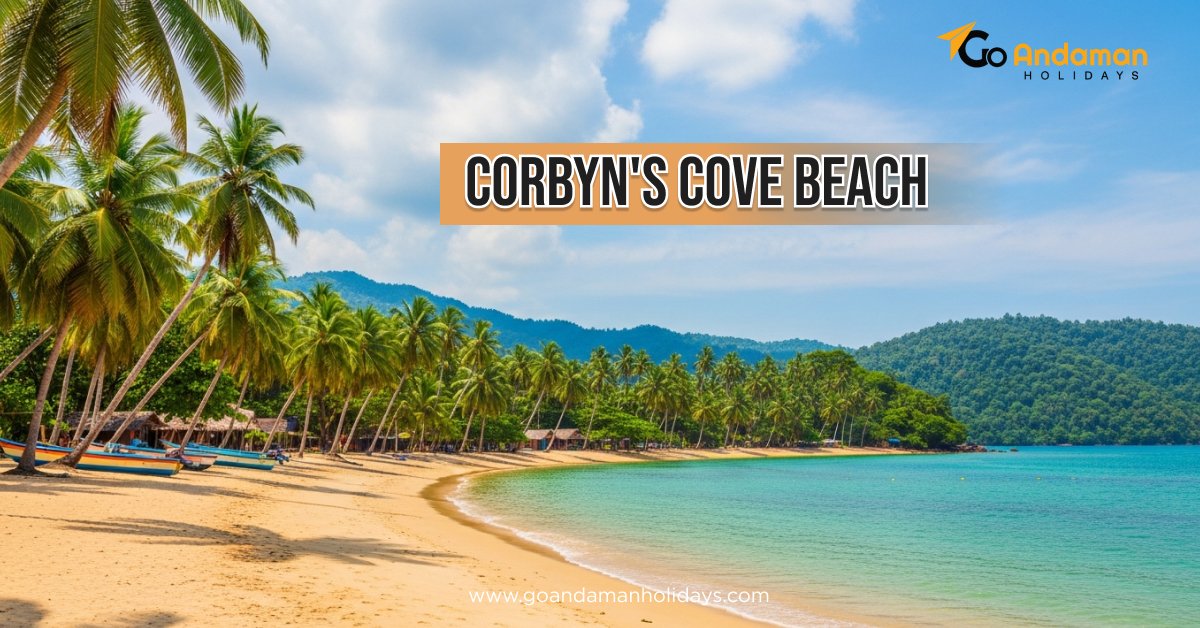
- Go Andaman Holiday
- 12-07-2024
- 0 Comments
The Hidden Treasures of Andaman and Nicobar Marine Life
Imagine this: it's captured on video as you dance on the water, the wind gently tousling your hair, and as far as the eye can see, the water is as blue as the Caribbean Sea.
Let me take you to the Andaman and Nicobar Islands, a place where the sand is as white as pure snow. The sun warms your skin, and beneath the surface lies an underwater world that feels like another planet in terms of beauty.
Let’s Discover Andaman and Nicobar Marine Life
Well, then, let’s consider encountering the wonder and forgetting about everything that has just been said. The Andaman and Nicobar Seas hide many fascinating marine species, and let’s unlock them together!
So let’s start with the Andaman and Nicobar Islands water animals.
1. Coral Reefs: The Mysterious Art of the Ocean’s Depths
Marine life in Andaman and Nicobar Islands is not all about sea fish varieties as many of us might think, the actual attraction is something completely different.
Picture this: it is sort of a marine botanical garden, you are not going to see blooms in various shades but corals of all those colours will be there.
These reefs teem with organisms; you will be able to see and marvel at various corals – from the thin and intricate to the huge, blocky kinds. They are like the skyscrapers of the ocean; these formations provide food and shelter to a host of sea life.
These corals belong to some of the healthiest and the most colourful and vibrant extra-ordinary forms of reefs in the world found in and around the Andaman & Nicobar Islands.
These islands seem still to be relatively resilient, as other parts of the world have increasingly witnessed catastrophic coral ‘bleaching’, and consequent deaths of corals elsewhere.
This is because most of them are situated far from human activities while the others are as a result of adequate measures being put in place to protect the species.
Coconut reef has predominantly hard and soft corals, painted in a variety of hues and stippling the ocean floor intricately thereby encouraging a proliferation of marine life.
2. Fish Galore: A Living Rainbow
Among these coral skyscrapers, adding life to the scenes are the main players—fish and of course, numerous varieties of fish!
For instance, you are snorkelling and then you find yourself surrounded by beautiful parrotfish or watching the clown fish frolicking and playing peekaboo with its safe house anemone.
More than 1200 species of fish reside within these waters, rendering any dive or snorkel excursion an experience.
Get ready to meet the dreamy sea tortoises, graceful Manta Rays, which move through the water in such a manner as if they are flying in the skies and shameless barracudas with elements of dance sync something like every modern Olympics.
Ichthyologists and marine biologists consider the region as Andaman and Nicobar Islands for this reason very advantageous. With stunning fish varieties such as the colourful mandarinfish or the royal angelfish and the uniquely bizarre appearance of the frogfish.
Every reef organism has a specific role to play within the reef system, whether it be the surgeonfish that feeds on algae and helps to keep the reefs free of weeds, or the groupers that are the predators of several fish species and thus help to check the growth of fish numbers in the reef region.
3. Sea Turtles: The Gentle Giants
Now, let's talk about turtles. The Andaman and Nicobar Islands are like a five-star resort for these ancient sailors The expansive variety and range of territories that the ancient sailors used to cover have been dealt with well enough in other articles on the subject.
Loggerheads, greens, hawksbill and the largest turtles in the world- the leatherbacks- then dig their nests on the secluded shores of the islands. Have you ever been in the sea to swim beside sea turtles?
It is like being surrounded by this giant floating museum; a young man who carries with him a history older than those of us who have been alive.
It is also important to understand that sea turtles are a valuable link in the increasing chain of the sea life food pyramid. They play a crucial role in, for example, preserving habitats of certain species of fish that depend on seagrass beds and coral reefs.
These Islands serve as an important rookery area, which is an essential factor for the conservation of wildlife especially for the big turtle known as the leatherback turtle.
Many of the islands have had conservation initiatives that are vital in defence of these nesting grounds and offer hope for generations to come to contemplate such feats.
4. Dugongs: The Ocean's Unicorns
But if we are talking about gentle giants – as big as the largest whales – do you know anything about dugongs?
These nearly secret animals, or sea cows as they are also called, feed on seagrass in the coastal areas of the islands. It is as though seeing a dugong can be compared to the sight of a mythical unicorn.
They glide about and do so leisurely and steadily, almost as if they were the only inhabitants of the world under the sea and time was in abundance, which makes them provide a beautiful element in the aquatic environment.
Dugongs are categorised as vulnerable species and thus these areas give shelter to them. Oh, these are shy and gentle animals that are similar to the manatees and these are the only mammals of the sea which are strictly vegetarians!
An important role is to be associated with the preservation and development of the seagrass beds necessary for the development of many sea inhabitants.
The natural expenses that are found in the islands are now a prime target for conservational measures to counter the effects of fishing and further expansion of coastal facilities.
5. Sharks and Rays: Thrills and Chills
For those interested in some thrill in their submersion experience, Andaman & Nicobar Islands are just a perfect location for you. Gang shallow sharks and other reef sharks are frequently seen, and you might be fortunate (or daring) to view a tiger shark.
Manta rays which can grow to over 3 metres wide and are flat-bodied resemble spaceships as they swim.
These big fish are vital for the proper functioning of the marine ecosystem, as they control the numbers of the rest of the fish, which are their prey.
Some of the large species of rays include the Manta rays where divers are particularly fascinated with the Giant Oceanic Manta ray.
The chicks of these big birds can measure as big as 2 metres in height and have wingspans that range from 5 to 7 metres; these birds are renowned for their aerial stunts.
6. Tiny Wonders: Nudibranchs and Seahorses
They say all the great things in the sea are large and fancy, that is wrong, not all the marvels of the sea are large and grand. Other small and alluring animals include the nudibranchs and seahorses that can also be found in the Andaman and Nicobar waters.
We can compare nudibranchs to tiny pieces of jewellery that float in the sea—The sea angels are small, colourful sea slugs that don’t look real.
For, together with a great number of tropical fish, seahorses, which seem to be fairy creatures, holding on to seagrass and coral, make the sea look enchanting.
Soft-bodied and ribbed slugs called nudibranchs are photogenic because of the bright colours and patterns they establish. These are not just colourful fish that add to the beauty of the picture; they have a tremendous function of consuming algae and sponges.
Contrarily, seahorses are some of the speciality reining down means of the balance of the sea. This shows that these organisms prefer healthy seagrasses to live in since seagrass meadows are important for any marine life.
Any effort put in to conserve these habitats through conservation programs is very essential to the existence of such fabulous little creations.
7. Hidden Ecosystems: Mangroves and Seagrasses
However, apart from the coral reefs, several other ecosystems that cover the Andaman and Nicobar Islands include mangroves and seagrass beds. They are important to the ongoing biological wellness of the sea.
Some other benefits: Mangroves for example are said to support the life of juvenile fishes, crabs and shrimps. They also help in guarding the coastal areas from the surrounding waters and protect the shores from the effects of storms and tsunamis.
Seagrass beds are also essential for the marine ecosystem in the same way that coral reefs are imperative for the aquatic environment. It is a natural home to and feeding ground for many species of marine animals such as the above-indicated dugongs and sea turtles.
The meadow formation and its underwater component Seagrass, provide several ecological attributes such as seabed anchoring and water filtration capabilities through sediment and nutrient trapping and storing a large stock of carbon which addresses global warming.
Conservation Efforts: Protecting Paradise
Everything here is at risk, everything that has evolved in this society of living beings – overfishing, pollution, climate change. Fortunately, it seems there are active conservation programs designed to protect this underwater wonderland.
Every action has an impact: from the effective protection of the coral reefs to the coming up of sustainable thousands of tourists. Thus, all of us being the wise and active tourists we are, means they will remain intact in the time to come.
Understudies such as the Andaman and Nicobar Environment Team (ANET) and the Indian National Centre for Ocean Information Services (INCOIS) are continuously organising to track and conserve the creatures of these islands.
They analyse, survey, protect and monitor the environment, as well as being involved in developing the means for supporting local populations’ cooperation in the context of preserving the environment and the natural resources within it.
Other initiatives, such as ‘eco-tourism’, which seeks to make people appreciate the environment and its beauty with no interference or harm are also becoming popular and increasingly adopted among tourists.
The Role of Local Communities
In summary, local communities can be considered as major stakeholders that are involved in the management and protection of the Andaman and Nicobar marine environment.
There are still some indigenous people like the Nicobarese and Shompen living on the island who have been experiencing minimal interface with the so-called civilization.
These people have primary knowledge, especially in practices that are friendly to the environment, and would therefore ensure that the natural resources within the islands are preserved.
Attempts are being made to embrace these communities into the conservation style, thus partaking in the eco-tourism and conservation projects.
This not only meets the goal of preserving their traditions but also guarantees that conservation activities will be effective in the future.
Ready to Dive In?
So, what are you waiting for?
This is Andaman and Nicobar Islands and all is bright here – sandy beaches, transparent seas and the submarine world which can be reckless at any moment.
Be it a professional diver or someone who just loves to relax on the buoy when the sea is somewhat deeper, one is surely going to be mesmerised by the shades here.
Don’t just watch it, immerse yourself in it; let the suitcase be your signal for setting sail to this adventure with your snorkel ready for action. Welcome to the world of scuba-diving and exploring underwater Andaman and Nicobar marine life.




